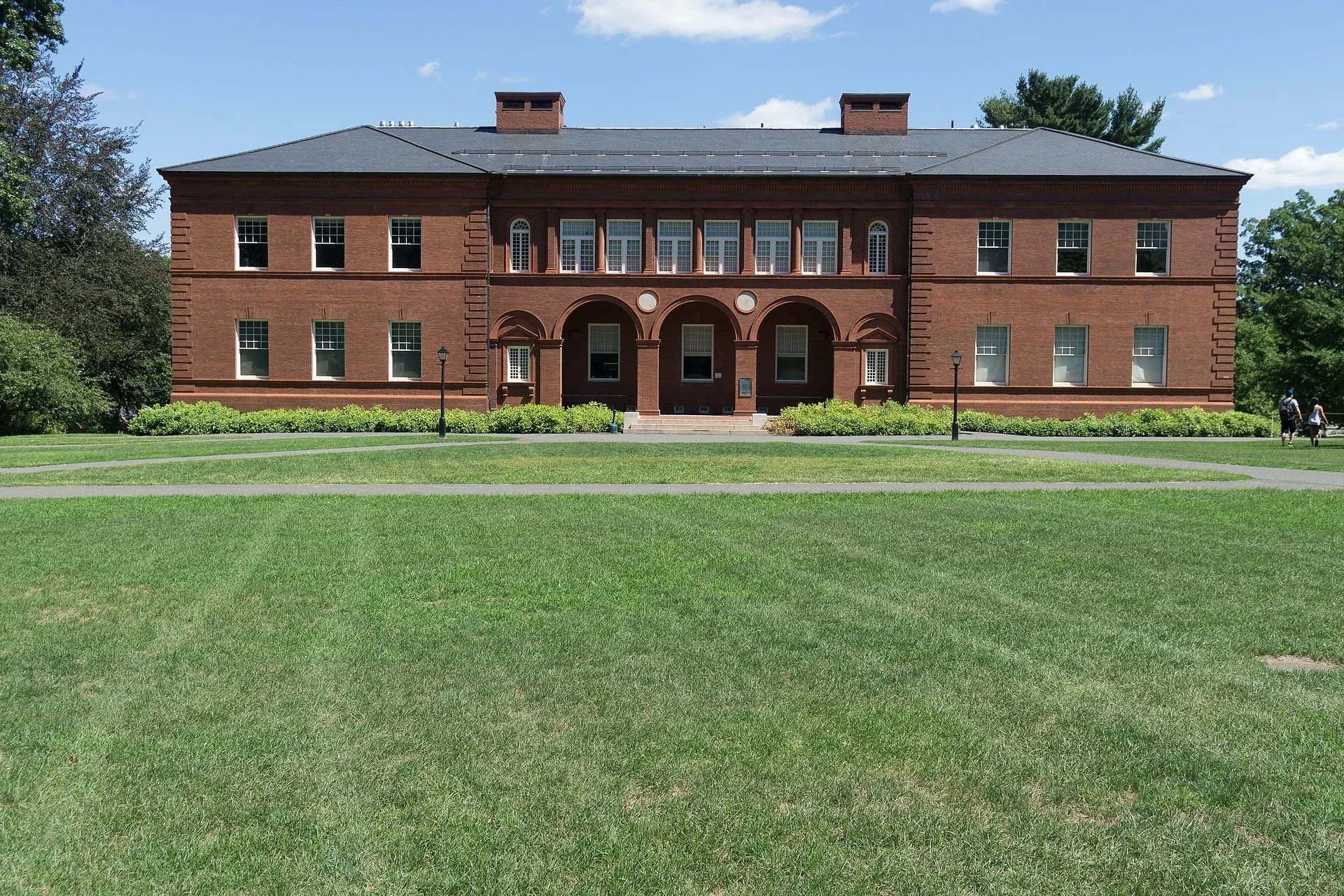A baby Hercules of a college
Fayerweather Hall at Amherst College. Founded in 1821, the college, in Amherst, Mass., developed from Amherst Academy, first established as a secondary school. The college was originally suggested as an institution to succeed Williams College (founded in 1793), in Williamstown, Mass., which was struggling to stay open but later thrived. The two rather similar elite colleges remain friendly rivals.
“The infant {Amherst} college is an Infant Hercules. Never was so much striving, outstretching, & advancing in a literary cause as is exhibited here.’’
— Ralph Waldo Emerson (1823)
Founded in 1821, Amherst College, in Amherst, Mass., developed from Amherst Academy, first established as a secondary school. The college was originally suggested to succeedWilliams College, in Williamstown, Mass., which was struggling to stay open but later thrived.
xxx
“You can always tell a Harvard man, but you can’t tell him much.’’
— Anonymous
The growing complications of admissions to elite colleges
Morgan Hall at Williams College, in Williamstown, Mass. The very prestigious college, founded in 1793, accepts less than 15 percent of applicants.
— Photo by Tim4403224246
Adapted from Robert Whitcomb’s “Digital Diary,’’ in GoLocal24.com
What will highly selective colleges, of which New England has many, do to try to maintain student populations at least vaguely representative of the country and world if, as seems likely, the U.S. Supreme Court bans affirmative for racial minorities in admissions?
Should the Feds ban the consideration of race and ethnicity as part of a holistic evaluation of a student’s application? I’d rather leave that to the colleges’ judgment.
An example of an SAT "grid-in" math question and the correctly gridded answer.
The decision of many colleges to no longer require that applicants for admission take the SATs probably makes sense because, in part, of the increasingly unfair advantage that kids from affluent families have because their parents can afford to send them to such expensive SAT-preparation services as the Princeton Review.
I suppose something like SAT-prep services existed back in the mid-60’s when I was taking such tests but I didn’t hear of any then. My high school’s college-admissions chief, the red-faced, chain-smoking and stout Mr. Sullivan, simply announced that the next SATs would be on such and such date – always a Saturday in two weeks. He said: “Bring two {or was it three?} No. 2 pencils and try to get plenty of sleep the night before’’ (ensuring that we wouldn’t sleep well).
And now the kids will take the tests on their own laptops and tablets. Hmm…will this favor more affluent students with more digital experience and could it make cheating easier? And what about kids who may not even own a laptop or tablet?
Still a fixer-upper
"Entropy #1, North Adams, Massachusetts'' (digital photo, pigment print), by Stephen Wicks, in the show "New England Collective IX,'' at Galatea Fine Art, Boston, Aug. 1-Sept. 2.
North Adams is an old factory town whose current biggest claim to fame is the Massachusetts Museum of Contemporary Art, said to be the biggest contemporary-art museum in the United States. It's in the former Sprague Electric plant. While North Adams is far from a rich town -- indeed has poverty and considerable grittiness --it's next to the rich community of Williamstown, with elite Williams College (which has a well-known museum) and the famed Clark Art Institute, not to mention the house of the late great songwriter Cole Porter. And the beautiful Berkshire Hills are all around.
North Adams in 1905, during its industrial heyday.






